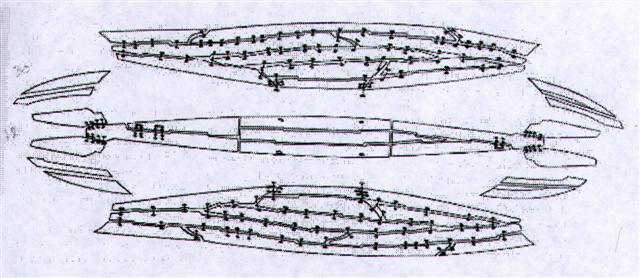The 2nd sequence has only 3 glyphs:
Murzim 9 is the 88th day in the Arabic manzil calendar. The synodic cycle of Mercury is 88 days, and in the Babylonian calendar view the sign of Mercury is between Frond and Furrow, not very far ahead from the sign of Jupiter. Below the Mercury sign is the Abyss. And there is only one new word for us, viz. te haś. The diacritic mark ought to show us this word is not the same as hau in hau tea:
The basic meaning of hau in my word list - where I normally have omitted diacritic marks, following the lead of Churchill - could be 'fibres'. In the very special Ca6-5 the triplet of 'calabashes' (hipu, children) are tied (hau) together (koia) - kua hipu koia, etoru koia. The unusual little word to we have met earlier only once so far:
From April 27 (117) to August 12 (224) there are 107 (= 472 - 365) days. Perhaps Metoro was referring to the Knot (Ukdah) at the neck of the Hydra:
Mangarevan to means to build a canoe of planks. In Gb8-4 we can imagine a canoe connected with a string (hau) to a rising fish. The planks of a canoe had to be sewn together, like the ancient Egyptian Ship of Pharaoh (all 15 + 12 + 15 of them):
There are 107 days' difference between my pair of possible dates in line Gb8, but I have not discovered any such such problem on side a of the G tablet:
I have a glyph type named haś:
When Metoro used words which obviously were exceptional, not in parallel with the normal type of glyph, it should draw our attention, because he probably then indicated something regarding the meaning of the glyph in question (not only describing it). | ||||||||||||||||||||||||||||||||||||||||||||||||||||||||||||||||||||||||||||||||||||||||||||||||||||||||||||||||||||||||||










